Subscribe to future posts here ![]()
Sailfish OS update from Jolla
There’s no getting away from the fact that 2021 was a tough year for many, if not all, of us. The year started in lockdown across many parts of the world, with varying levels of restrictions that came and went through the year. These constraints hit Jolla too, the social distancing and travel restrictions meaning we spent much of the year working remotely. Jolla is an international company with sailors working all over the world, so the myriad travel restrictions also prevented us from having our usual periodic face-to-face get-togethers.
Despite all of this, I think we can be proud of what Jolla and the Sailfish community achieved this year. This last October we even managed to have our first face-to-face community events for several years. So we thought it would be worth taking a brief look back at some of the major things that happened in the world of Sailfish OS in 2021.
A year in review
The first major Sailfish OS release of the year took place in February, when we revealed Sailfish OS 4.0.1 Koli. As with all Sailfish OS releases, there had been a build up to the release. Since the start of the year we’d been performing behind-the-scenes testing, followed by community testing and then early access all prior to the release.
Koli brought many important upgrades and paved the way for the work that we’ve continued throughout the year. This was the first release containing our Sailjail implementation, based on Firejail but heavily tailored for Sailfish OS. We also saw the browser pushed up to Mozilla’s Extended Service Release 60 of the Gecko engine, and also the update of Android AppSupport to Android 9 Pie.
Soon afterwards we had the release of the Sailfish SDK 3.4. This brought an improved build engine, an improved emulator and an updated IDE. It also saw the continuing development of the sfdk tool for command-line handling of the build process.
This set the year off to a good start. Then in May we had the next Sailfish OS release, with the Kvarken — Sailfish OS 4.1.0 — seeing the first light of day. But this was more than just a Sailfish OS release, given that it also brought support for the Xperia 10 II, the very first 64-bit ARM architecture device with official Sailfish OS support. The release also saw feature improvements, such as the introduction of support for Open Forti VPNs, and pushing Android AppSupport up to Android 10.
Alongside the over-the-air releases of the operating system to your device, the SDK team also releases the SDK images for the build engines and emulators. There’s always a surprising amount of work involved, requiring both SDK and image changes. As vige explains
we always provide early access targets at around the same time as the OS goes to early access. So in the case of Sailfish OS 4.1.0, we provided EA targets for SDK 3.4 users in May.
Then soon afterwards, on 10th June, the Sailfish SDK 3.5 was released, including RPM package signing and another upgrade of the IDE. So this dual release cycle kept the SDK team busy throughout the year!
September saw the release of Sailfish OS 4.2.0 Verla, with its brand new sharing system. As well as a much improved user-experience, the new sharing system also crucially separated the sharing process from the app performing the sharing, paving the way for Sharing to be supported officially by third party apps. Verla also introduced many new UI improvements, such as the sticky app grid and many improvements to the Calendar app, to name just a couple.
October was a busy month. It started out with the release of the Sailfish SDK 3.6, which bolstered support for clean builds, and introduced some nice new documentation and examples, most notably a new example app showing how to access the Camera API.
And then on 14th October, we hit the ten year mark for Jolla as a company. This was an important milestone in itself, demonstrating Jolla’s resilience, persistence and commitment to supporting customers and partners everywhere. But it also gave us a really good excuse to have some very energetic and enjoyable community events, first in Berlin and then in Helsinki. If you were able to attend, we hope you have fond memories just as we do.
In November we had the release of Sailfish OS 4.3.0 Suomenlinna, our fourth Sailfish OS release for the year. This saw the extension of the Sharing system from Verla to incorporate Android AppSupport apps, as well as improved security, better AppSupport compatibility, and official support for a couple of new APIs: WebView and WebAuth.
Shortly after we had the release of the new Developer Docs site, notable because it now allows anyone to contribute by creating git pull requests directly to the docs themselves. We’re already beginning to see the benefits of this with new content coming from the community.
At the very start of December we saw the release of Sailfish SDK 3.7, with notable improvements being bash autocomplete for the sfdk tool, as well as man-page based help. Both very welcome productivity enhancers.
And then, finally for 2021, we saw our return to the UK market on 16th December. We had to leave the market at the very start of the year due to the changing tax rules brought about by the end of the UK-transition period in January of the year. The return to the UK required a considerable amount of planning, reorganisation and even recoding of our backend shop systems. So while it took the year to get to this point, we’re happy that we did and that it leaves our systems more flexible than they were before. Early indicators suggest that the process was a success.
Along with our return to the UK, we’ve also been running our Buy-One-Get-One-Free offer, which as I write this still has just a few more days to run, so if you’re still thinking about it, now is the time to act. The offer will close in the coming days.
An important part of Sailfish OS development is the translation and localisation of all the assets and apps that make up the system. As always the localisation experts, both within Jolla and from the community, did a phenomenal job this year. As well as keeping things up-to-date for the new releases, we also saw three new languages becoming officially supported during the year. Slovenian and Lithuanian are all now part of the default set of languages provided in the operating system. Many thanks go to sponka and sledges/Ta_das respectively for their amazing work on these. There were also several new community languages started this year too. Kudos to garaushi, Njoroge, maquis196 and others for their work getting Latvian, Swahili and Icelandic up and running. A couple of older languages gotten picked back up again, such as Thai (nerd7473), Galician (DavidGaliza), and Ukrainian (nemishkor) — such activities are very much encouraged and appreciated! Jarkko Ahonen (jahonen) from the localisation team at Jolla had this to say about his experiences in 2021.
In general our translation rounds have gone smoothly thanks to our great community members. Sometimes our schedules may be too tight but we have still managed to cope with them as well. So a big thank you to all community members!
So there was no shortage of activity this year on the Sailfish OS front, and we’re happy that the pandemic didn’t slow us down, most notably we still managed to get out our planned four releases for the year. And we certainly hope you appreciate some of the improvements that these new releases brought with them.
I can say for certain that not only the entire team at Jolla, but also many of our very active and appreciated community members, worked incredibly hard on these releases and everything around them.
A year in statistics - Software
Let’s increase our altitude a little now and consider what the year looked like as a whole. Statistics seem to have been the main currency of news outlets this year, and never let it be said that we don’t know a good bandwagon when we see one. So to help get a better picture, keto and xfade have very kindly collated some fascinating Sailfish OS statistics for the year.
Let’s start with the software. This year has seen quite a shake up in the Sailfish OS software space. The most dramatic change has been the introduction of 64-bit binaries. In order to work with the newest Xperia 10 II handset, apps had to be recompiled to the new aarch64 format. While in the majority of cases this recompilation is a straightforward task if the source is available, that’s of no benefit if an app is no longer being maintained.
As a result there were quite a few apps that found new maintainers this year. While of course it’s sad to see old and unmaintained apps fall by the wayside, it’s also much better to have apps that are being actively and properly maintained, so the upheaval did bring distinct benefits. More recently we’re also seeing changes required due to sandboxing. The two combined have resulted in a welcome rejuvenation of many apps.
So which apps have been the most popular in 2021? Here’s the top 10 list according to downloads from the Jolla Store in the last 12 months. We’ve removed official Jolla apps, as well as the Android app stores (F-Droid and Aptoide) from the list, to give a better picture.
- File Browser from ichthyosaurus
- Pure Maps from rinigus
- HERE Maps from HERE
- Fernschreiber from WerkWolf
- Webcat from leszek
- BarCode from slava
- Fotokopierer from fifr
- GPSInfo from balta
- Advanced Camera from piggz
- OSM Scout from karry
Congratulations to ichthyosaurus for hitting the top spot with File Browser. It is for sure a very useful and effective app. It’s perhaps not surprising to see mapping software well represented in the list; Pure Maps, HERE Maps and OSM Scout appearing and all excellent pieces of software. However, for me it was also a surprise to see so much functionality in the list that’s technically supported by the operating system: file browsing, web browsing and barcode reading are all now built in to the operating system. But clearly there’s appetite for enhanced or different approaches, which is no bad thing.
While downloads are important, they’re not the only metric of success. It’s also worth looking at which apps really got the “thumbs up” from their users. If a user takes the trouble to favourite an app, then they really must like it. So here’s the top ten apps in terms of user reaction.
- File Browser from ichthyosaurus
- Pure Maps from rinigus
- Fernschreiber from WerkWolf
- HERE Maps from HERE
- Fotokopierer from fifr
- BarCode from slava
- BIM from jpetrell
- SeaPrint from attah
- German Weather Service from poetaster
- Patience Deck from tomin
There are some notable similarities, but also differences here. We see BIM, SeaPrint, the German Weather Service app and Patience Deck all getting special approval from their users. All very worthy of note, and particularly nice to see that these are also all relatively new apps, appearing in either 2020 or 2021. By the end of this newsletter we’ll have covered all of these new apps in the newsletter over the last year, so do look back through the archives if you’re interested in finding out more about them.
A year in statistics - Devices
All in all, 2021 was a good year for apps on Sailfish OS then. It’s also been a good year for hardware, and in the last newsletter we saw how port maintainers have been releasing new versions of Sailfish OS for a myriad different hardware types recently.
But let’s look first at the official roster of Sailfish X supported hardware. The Xperia 10 II picked up the lion’s share of installations this year, amounting to well over half of all licences purchased. The Xperia XA2 stands up surprisingly well with just over a quarter of installs. Perhaps this shouldn’t be such a surprise, since despite its ageing chipset it still offers a big battery and a more compact screen size. The Xperia X, though a lovely phone, is now dropping behind in terms of usage, reflecting its somewhat ageing capabilities as well. The full set of comparative stats can be seen in the graph below.
As we saw in the last newsletter, there’s also no shortage of ports for devices that don’t fall into the Sailfish X programme. While we don’t get purchase information for these devices, we are able to gather approximate usage statistics based on the quantity of devices pulling down packages from the update servers. In order to give the most up-to-date and 2021-relevant data, we use numbers only for Sailfish OS versions 4.0.0 and above.
Based on this data, the top ten non-official Sailfish OS ports in 2021 were the following.
- Pinephone
- Xperia XZ2 (all variants including compact)
- Xiaomi Redmi 5 Plus
- Volla Phone
- Fairphone 2
- F(x)tec Pro¹
- LG Nexus 5
- Samsung Galaxy Note 4
- Moto G7
- Samsung Galaxy S2
Within the porting landscape the Pinephone, it turns out, is by far the most popular, with over double the installs of the other devices in the top ten list combined. But the other ports in this list are also well-used. I was surprised myself to see the Nexus 5 still in the list until I tried it out myself and found it be surprisingly capable, despite being an eight-year-old device.
But it’s also great to see the newer and more open phones being so popular. This won’t come as a big surprise of course, but it does underline the fact that there remains considerable interest in more open phones, aligned with more open operating systems.
Looking back at the events, software, and hardware from 2021, it feels like it’s been a really good year, despite the challenges we’ve all had to face. It’s certainly felt like a good year for Jolla, and in no small part due to the amazing Sailfish OS community.
Happy New Year to all our developers, translators, partners and most of all users of Sailfish OS. Roll on 2022!
Energy from the Community
For our updated apps summary this newsletter, we’ve picked out the number one app from the Jolla Store to take a closer look, along with a few other apps that were updated in the last couple of weeks. Apparently the Christmas period still left time for many of you to update your code! We were particularly impressed to see app submissions to the Jolla Store even on Christmas Day. The motivation of Sailfish OS app developers runs deep.
File Browser
If you’ve already read the preceding sections of this newsletter you’ll know that File Browser by ichthyosaurus holds a special place in the hearts of Sailfish OS users. In 2021 it was the most-downloaded community app, the most liked community-app, and it also generated the second highest number of comments on the Jolla Store (after Fernschreiber). So it’s obviously a bit special.
Ostensibly it allows you to view and manage your files, much like the built-in file browser in the Settings app. But a cursory glance at the user interface immediately uncovers the fact that there’s a lot of functionality here. Each page has pulley menus at the top and bottom of the screen, plus an extra set of functionality in a burger menu. There are also glass indicators in the header to move up the file hierarchy, or to jump to a common location or bookmark, and to access settings. So there’s a lot going on here.
Pressing and holding an item opens an unusual and innovative context menu comprised mostly of icons to pack everything in. Another innovative touch is that the top pulley menu includes an editable field for filtering the contents of a folder.
Many different types of multimedia file can be viewed directly in the app, others can be sent to apps that are registered to receive the relevant mime-types. And any file can be viewed in its raw form, either as plain text for text files, or the raw bytes for binary files in hex format.
So while the app isn’t afraid to pack in power-user functionality, it’s also pretty intuitively laid out and even though I’m not a regular File Browser user, I found I was moving around the app and using the full breadth of its functionality in a matter of minutes.
The app is also highly configurable, allowing full control over sorting, use of preview images, actions, filtering, and display options.
Also worth noting is the breadth of translation support for the app, with no less than sixteen languages supported.
If I didn’t know any better, I’d say that the depth and breadth of functionality could be off-putting for some users. But the fact is, File Browser is a hugely popular app, and every indication suggests that this is, in fact, an app that almost every user will really appreciate.
If you’re one of the few people yet to have installed File Browser, you can find it in both the Jolla Store and on OpenRepos.
German Weather Service
The German Weather Service app, maintained by Mark Washeim (poetaster) is another that made it into our top ten lists above. Not only is it well-liked by its users, it’s also just recently seen an update.
As you might expect, the app is a client for the Deutscher Wetter Dienst, which again as you might expect, provides accurate weather information for locations across Germany. The app supports multiple locations which you can switch between easily, and locations can be configured either by searching through the list of pre-set destinations, or storing based on your current GPS location.
Once configured this way, the app provides detailed information for the upcoming five days, including temperature highs and lows, chance of rain, expected quantity of rain and wind speed, as well as an overall weather summary. Selecting one of the days allows you to drill down further to give hourly forecasts, providing similar information with the addition of barometric pressure.
The app is easy to configure, and provides all of the information you might need in an immediate and clear manner. You can see why it’s garnered so many positive reactions from its users.
Perhaps the biggest downside to the app is that it only covers locations in Germany, but it would be unfair to call that criticism. The latest version adds Sailjail compatibility, including the functionality needed to migrate the app data for a seamless transition.
The latest version is available from the Jolla Store, as well as OpenRepos.
Yottagram
In the last newsletter we featured a number of ports from Michał Szczepaniak (Mister_Magister), and where we also mentioned some apps from the same author. Michał got in touch with us to highlight that he’s recently updated several of these apps. We’re always really happy to know of app updates directly from app authors, so please do get in touch if — like Michał — you’ve just updated an app and would like to see it featured here.
Yottagram is one of these recently updated apps. It’s a particularly well-featured Telegram app that’s seen a great deal of activity recently, and as such has been progressing at a rapid pace. Its main competitor is WerkWolf’s Fernschreiber which we looked at way back in February. Both provide their own different take on the mobile chat client.
Basic functionality such as individual chat, group chat, media attachments and search are covered nicely by both apps. Some of the more specific functionality is also ably fulfilled by either app, including stickers, voice notes, and location messages.
There are some features, such as search within a conversation, profile management, and creating new chats, that are available in Fernschreiber but aren’t yet featured in Yottagram. On the other hand the reverse is also true. If you want to create polls, use secret and self-destruct messaging, or perhaps most impressively, use Telegram’s voice-call feature, then Yottagram should be your native client of choice.
Hopefully this gives an idea of the impressive level of functionality provided by Yottagram, and on top of that the UI is also generally very nicely laid out. It would be nice if messages took up the whole width of the screen, but this is somewhat mitigated by the configurable font size, allowing a smaller size to fit more of the message content on the screen.
This is a very usable client. Both Yottagram and Fernschreiber provide complementary functionality, so even if you’re a Fernschreiber user, I’d recommend giving Yottagram a spin to test out its functionality.
The latest version added the calling feature, and as Michał explains, it’s the “first time in history of Sailfish OS that someone got telegram calls to work”. A very nice achievement. The latest version of Yottagram is available from OpenRepos.
Michał also recently updated Septitrac, a Traccar client for uploading location data from your phone to the Traccar service. We’ll aim to look at this in more detail in a future newsletter, but in the meantime you can also try it out for yourself by downloading a copy from OpenRepos.
SailfishClub (旗鱼俱乐部)
SailfishClub by birdzhang is a native client for sailfishos.club, an unofficial forum aimed primarily at Chinese-language users of Sailfish OS. The app provides both read and write access to the forum, the latter requiring you to log in. But if you want to just browse, you can do that directly without an account.
Admittedly I’m not able to follow most of the conversations in the forum directly — you’ll need to be able to read and understand Chinese in order to do that — but it’s clear that it’s a lively community. I’d also like to think it’s possible to appreciate the software without needing to follow all of the conversation, and on this front it does a great job.
The design is unusual in having a menu that pulls in from the left hand side of the screen, in addition to the more spartan pulley menu at the top. From this you can switch between different topic categories, or pick out popular and recent topics. Clicking on a topic allows you to read the full thread, and publish replies to individual posts.
Scrolling takes you through the topics in the category, paginated twenty topics to a page.
Forum software like this and the SFOS Forum Viewer we featured earlier in the month can bring a lot more delight and immediacy to interacting with other users on a forum, so for the Chinese-speaking Sailfish community, we really recommend SailfishClub.
The latest version of SailfishClub includes updates for sandboxing and account improvements, and it’s available from both the Jolla Store and OpenRepos.
Please feed us your news
This is a community update, and frankly we can’t always keep up with all the exciting stuff happening in the Sailfish community. Plus, the less of this we have to actually write ourselves the better. So please help us out by posting your Sailfish news updates to the forum as a reply to this post. We’ll collate as much of it as possible into one easily digestable post for the next update.
Don’t forget to join us in the new year at one of our community meetings. They’re held every other Thursday on IRC. The next meeting will be on the 20th January.
We wish everyone in the Sailfish OS community a most happy and prosperous New Year!
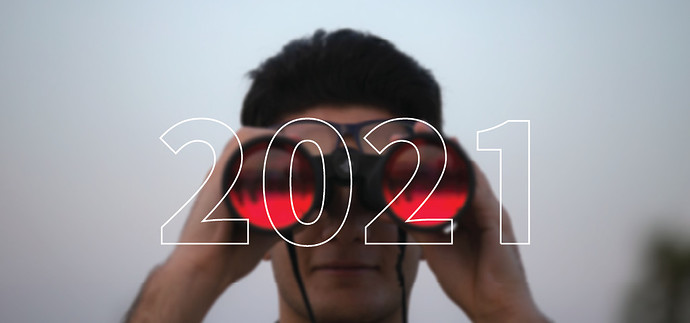

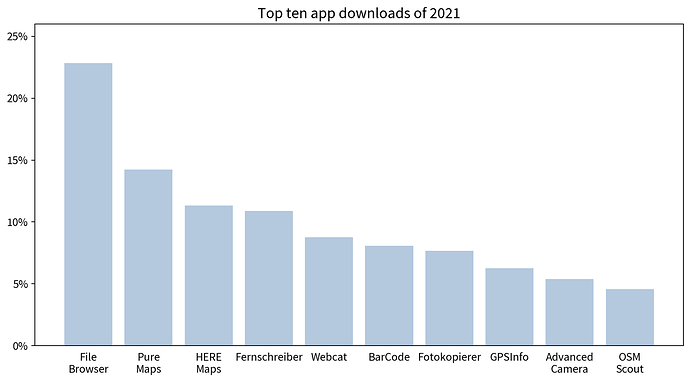
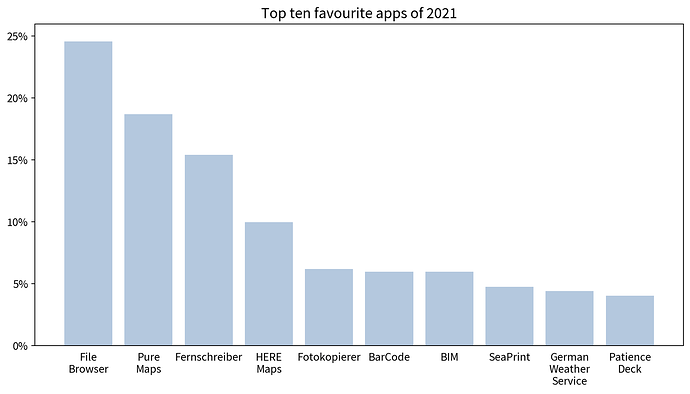
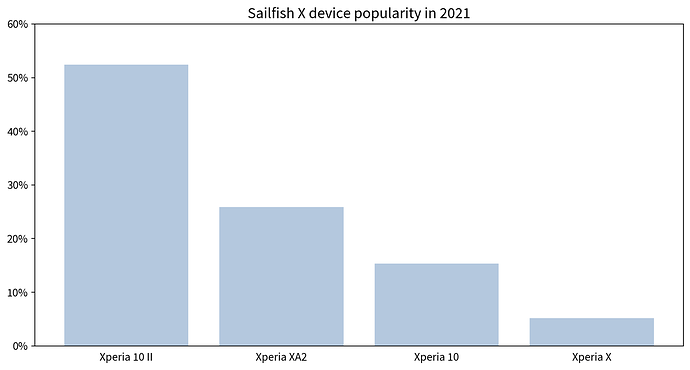
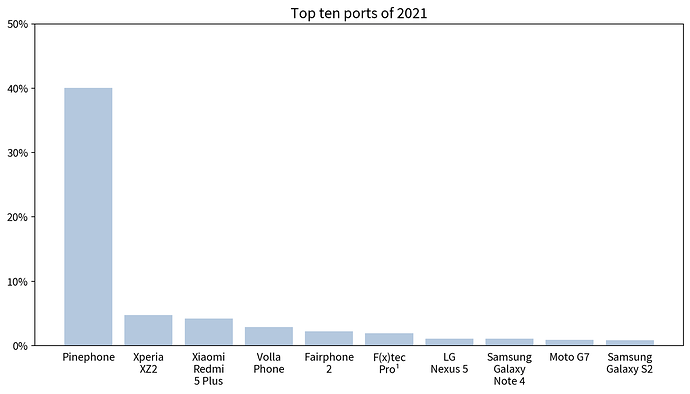

 So, let’s see if I can clean up and document to the original standard I’d hoped … in 2022!
So, let’s see if I can clean up and document to the original standard I’d hoped … in 2022!